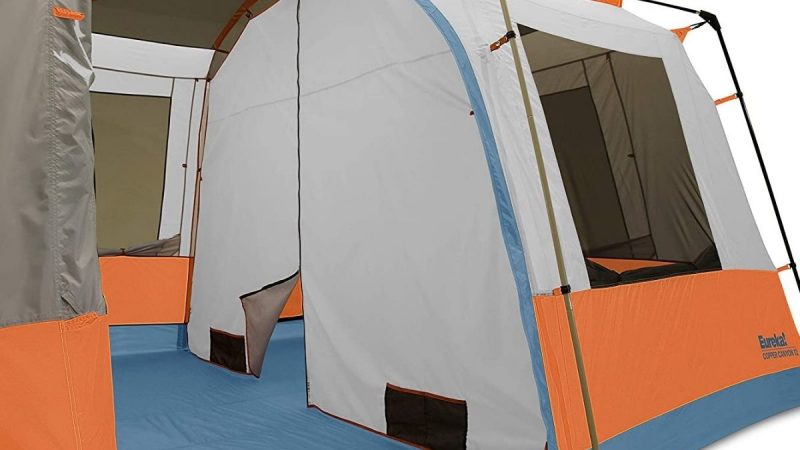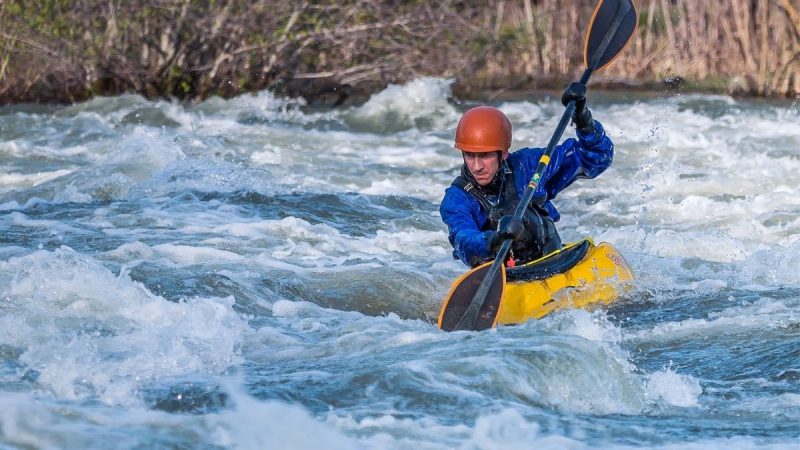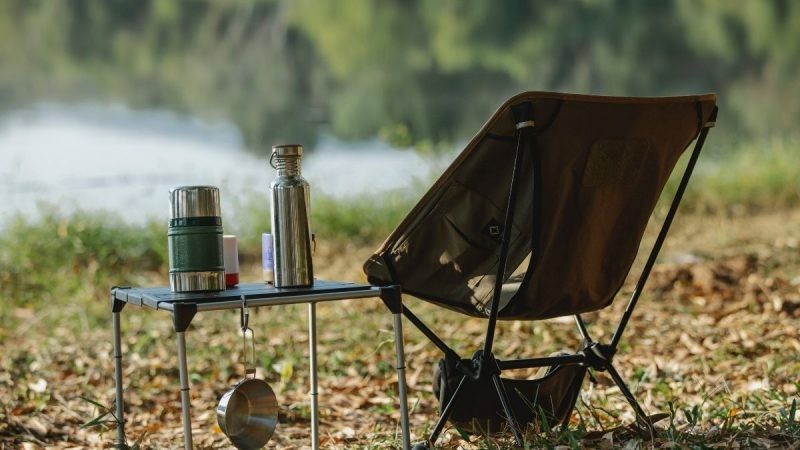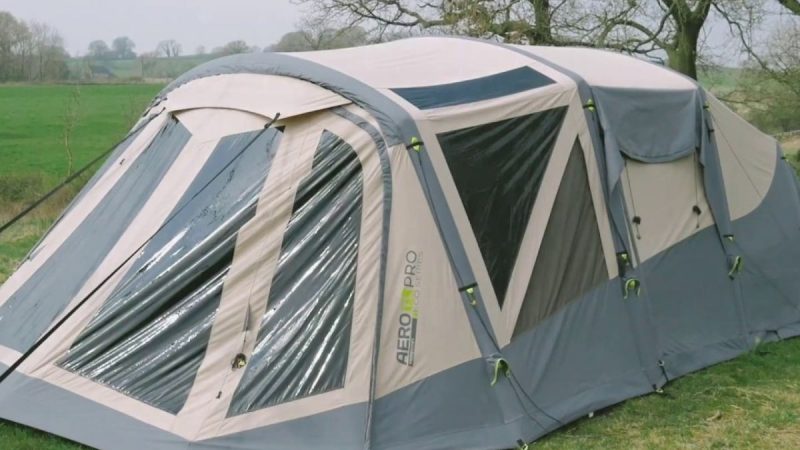How to Avoid Ticks When Camping
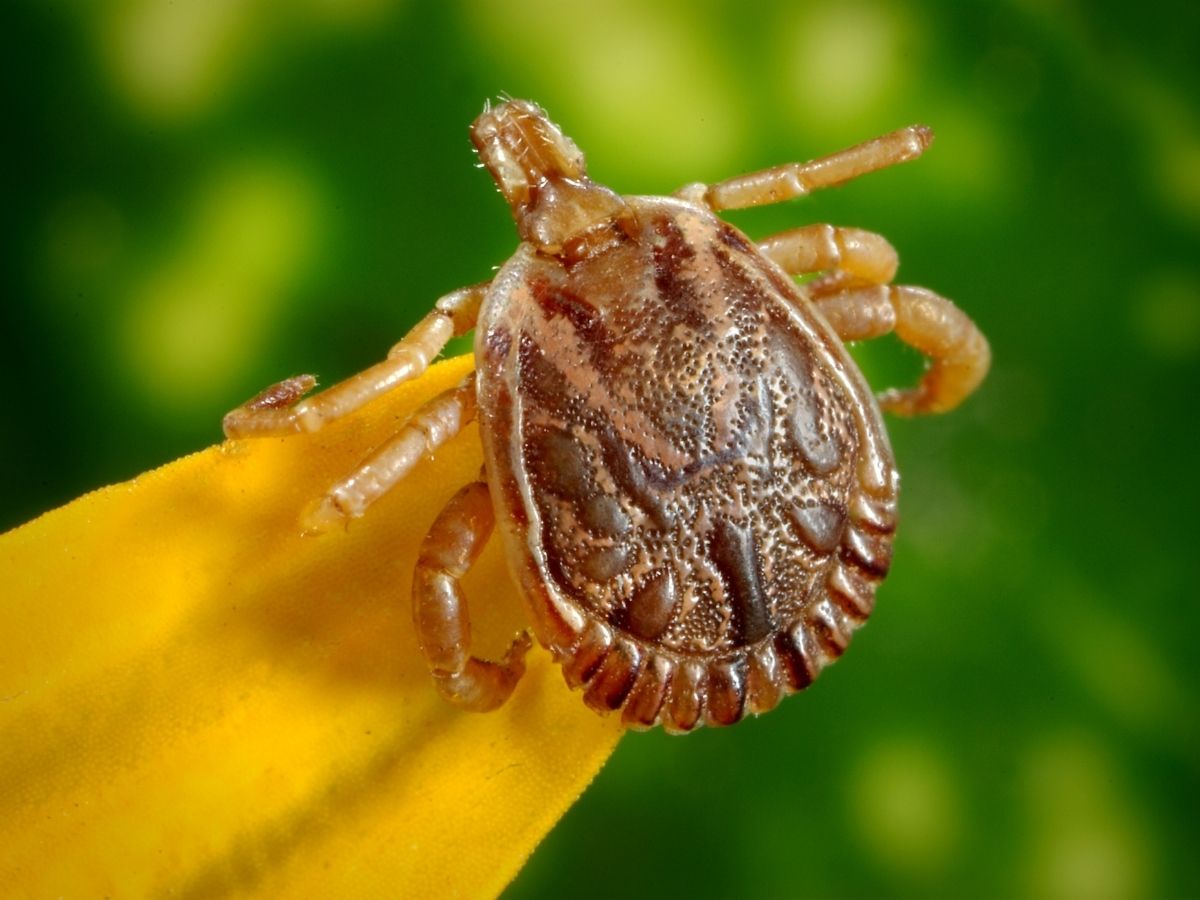
How to avoid ticks when camping can be a real struggle. Tick jump, fly, or fall from trees onto your head. Instead, they tend to wait in tall grass and low-hanging branches, using their camouflage as a defense mechanism to remain unseen while they wait for a potential host.
Tick bites can cause Lyme disease and other blood-borne diseases like babesiosis and anaplasmosis. Moreover, tick bites can break your entire camping trip by getting a serious infection from one of the many tick-borne bacteria that’s transmitted when they bite.
This article will look into how you can avoid ticks when camping in the wilderness.

10 Ways to Avoid Ticks when Camping
Planning Ahead
A camping trip is never easy if you don’t do prior planning. All trips start with a trip to the grocery store, but camping trips are best planned when you know your destination and how you’re going to get there. Whether it’s a hiking, canoeing, or merely driving to a campsite, always take the time beforehand to check for ticks along your intended route of travel. In addition to checking yourself, ask others in the car if they’ve noticed any suspicious-looking bugs crawling around on them recently.
Always carry a stuck kit that includes a fine-tipped tweezer and a small container for safely sealing the tick.
Check Yourself, Your Family, and Your Campsite Often
Check yourself every time you come in from outside, paying special attention to your legs, especially behind the knees and near the groin. Remember that adult ticks are about 1/4″ across (the size of a sesame seed or slightly larger), which means they can be easy to miss if you’re not looking carefully enough. Be sure to check your pets as well, since ticks often crawl up their fur and onto their bodies when they get close enough.
Defensive Dressing
In tick-heavy environments, it’s best to wear long pants and long-sleeved shirts as a form of protective clothing. Tucking your pant legs into your socks and taping your shirt sleeves down with duct tape will help keep ticks from falling or crawling onto you, especially when bushwhacking through the thick foliage. Your clothes should also fit tightly enough around the wrists and ankles so that ticks won’t be able to crawl up beneath them.
Dry Down
Ticks are often found in damp areas such as low-lying woodlands, shady ditches filled with stagnant water, or swampy ground where vegetation is thick and unkempt. Avoid camping near these kinds of habitats if possible, because not only do they provide a potentially higher risk of being bitten, they also tend to harbor mosquitoes and other pests that can carry diseases. In addition to camping in the dry woods far away from water sources, consider pitching your tent on top of a raised surface such as plywood or cinder blocks rather than sleeping right on the ground underneath it.
Scent Control
In tick-infested environments, there’s a good chance you’ll get a bite even if you follow all of these precautions tightly. If you do happen to get bit despite your best efforts, make sure you know how ticks are transmitted by their saliva before coming up with an effective treatment plan for your bite mark. After getting out of the wilderness and taking a shower using antibacterial soap, use an anti-itch cream or gel to help reduce the swelling and irritation.
Keep off the Grass
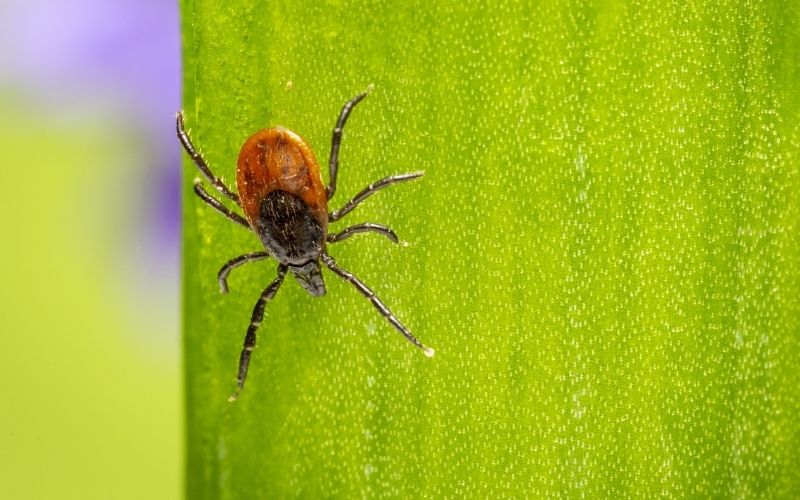
In tick-heavy environments, it’s best to avoid tall grasses and low-hanging branches. These are where ticks tend to hide in wait for a potential host, using their camouflage as a defense mechanism to remain unseen while they wait for a passing animal or human. Ticks feed on blood from small animals like deer and mice, but they can also bite humans if the opportunity presents itself when we brush up against them at knee level.
Stick with Familiar Trails
If you know your destination well enough to take a trail directly there, it’ll be less likely that you’ll need to do any bushwhacking through thick foliage where ticks may lurk. Stick to familiar paths (or clear away anything blocking the path ahead of you) and you’ll decrease the chances of accidentally wandering into a tick-infested area that wasn’t part of your original plan. Check regularly for ticks as you travel from spot to spot, using all of your senses, not just sight and make sure you have not missed anything.
Tick Prevention Tips
To learn how to avoid ticks when camping, I spoke with Officer Derek Dye of New Jersey’s Hunterdon County Health Department. In his role as a county environmental health specialist, he is often out in nature dealing with tick bites and other ailments that plague people who spend time outdoors. Some of his tips for avoiding ticks include:
Avoid Low Hanging Branches
Be very cautious about spending too much time directly beneath low-hanging branches which tend to collect leaves and debris, especially if there are tall grasses around them. This is one of the most common places where ticks like to hide. When you finish your campfire at the end of the night, take the necessary precautions to extinguish it properly. Don’t just douse it with water and call it a day, you want to be sure that all of the embers have been smothered and that the fire won’t start back up while you’re sleeping.
If you think you’ve found a tick on your clothing, place a clear piece of tape over it and then pull it away carefully after about 30 seconds. Check both sides of the tape for any crawling specks of blood, indicating they are indeed ticks that could potentially spread disease if they bite you or someone else.
Don’t Leave Camp Unattended
If you go off into nature by yourself to practice your long-range shooting skills, make sure someone knows exactly where you’re going and when you’ll be back. If you don’t return as expected, it will greatly raise the chances that someone will come looking for you.
Keep Your Car Clean
When coming back from a camping trip, don’t forget to give your car a good once-over to make sure no ticks are inside. These potentially disease-carrying insects like to hide in dark crevices. Once home, remove all of the mats and shake them out outdoors before bringing them back inside. This goes for any outdoor gear or clothing while camping but still needs to be stored away inside your house (especially if pets were around).
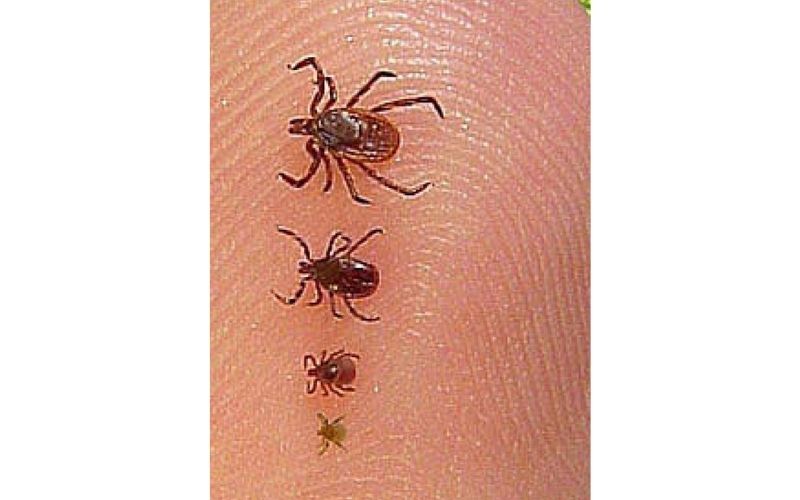
Tick Removal
If you find that you have a tick on your person, you can follow the procedure below. It’s important to do it within 24 hours because that is the window of time in which an attached tick can transmit Lyme Disease, which is a big potential concern for those visiting wooded areas.
- Remove any Tick as soon as possible by grabbing its mouth parts with tweezers as close to the skin as possible and pulling straight out.
- After Removing The Tick, Clean the wound thoroughly with antiseptic and disinfectant wipes .
- If you experience a rash or redness around the area , or if you develop flu-like symptoms including aches, fatigue, fever , or swollen glands during the next few weeks following a camping trip, make sure to tell a doctor about where you were and what you may have come into contact with during your visit.
Things to Have in Posession for Removing Ticks
Tweezers

These help in removing ticks securely and quickly.
Alcohol or Peroxide

These help to cleanse the wound area of any tick secretions that may cause infection.
Disinfectant Wipes

These allow you to remove ticks more easily and also disinfect the affected area. They make it easier to remove the tick without leaving parts of its body behind that could cause a spreading infection.
Use a Tick Key

This is a great tool to have when removing ticks because it’s basically like having another set of tweezers built-in to make the process simple and comfortable without leaving too much tick material behind. In case you cannot find a tick key, however, you can improvise by tightly gripping the tick with a pair of tweezers and gradually backing it out.
Other Ways to Protect Yourself
If possible, avoid walking in tall grass and brush whenever you plan on camping in an area near wooded regions where ticks are known to breed and live. If you do need to pass through infested areas, make sure that your clothing covers the entire body, including the feet. Tucking pants into socks and wearing closed-toe shoes is also a good way to make sure ticks will have trouble getting inside your clothing and biting you.
You can also treat your clothing with insect repellant so they won’t be able to bite through it as easily. Don’t forget to reapply repellant after being in the water, sweating a lot, or drying off with a towel.
Make sure to check for ticks regularly while camping and if you find any attached to your person, remove them right away by following the steps above. A doctor should be notified immediately regarding any signs of Lyme Disease that may arise after removing an attached tick.
Conclusion
To conclude, always try to avoid ticks when camping by being alert and cautious. If you can, wear clothing that will cover your entire body and avoid walking through tall grasses. Moreover, it would also be wise to know to fight leeches when you are on a camping trip. Have a safe camping trip!

